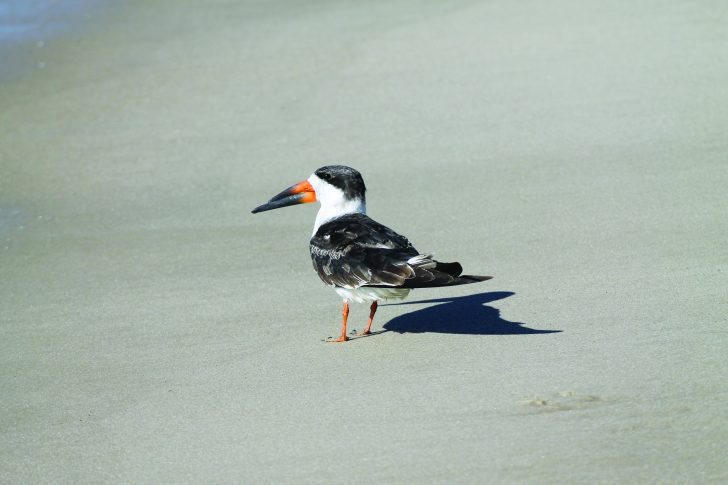

One of those little birds with a long migration is the Least Tern. Each spring, Least Terns migrate from Central and South America to Florida’s shores and beyond for summer nesting season. They nest in large groups called colonies. While the colony can deter most natural predators by banding together to attack them, these birds have no defense against toxic algae or rising seas and are highly vulnerable to disturbance by humans and dogs. The government has established Critical Wildlife Areas to provide extra protection in key locations, but these birds have fewer places available to nest in peace.
Black Skimmers are larger seabirds that resemble masked bandits with short legs, black and white plumage, and a black and orange bill. The lower half of their bill is longer than the upper, enabling them to “skim” across the water with their lower bill dragging across the surface in search of a fish. They eat a variety of fish including needlefish, pipefish, and ballyhoo. Black Skimmers nest in colonies on the sand just above the high-tide line from the mid-Atlantic to Mexico where eggs and young are threatened by summer storms, high tides, and human disturbance. Each fall, individuals that breed as far away as New York or Texas arrive on Florida’s shores to spend the winter.
While it is especially important to be aware of locations where birds nest each summer, many others are now arriving for the winter. Together we can all share the shore!
